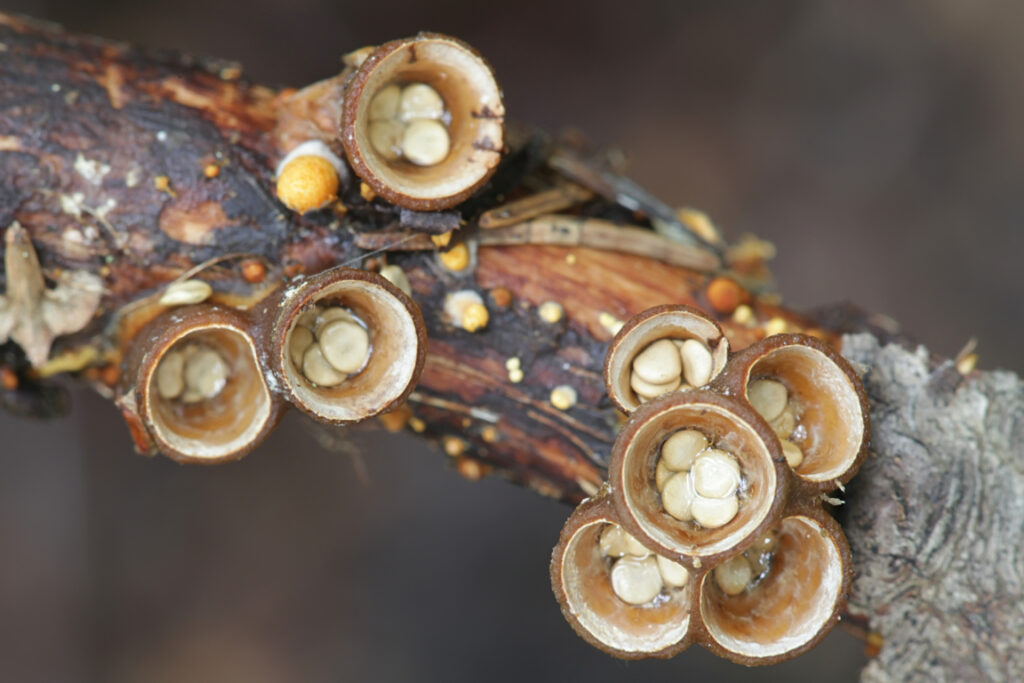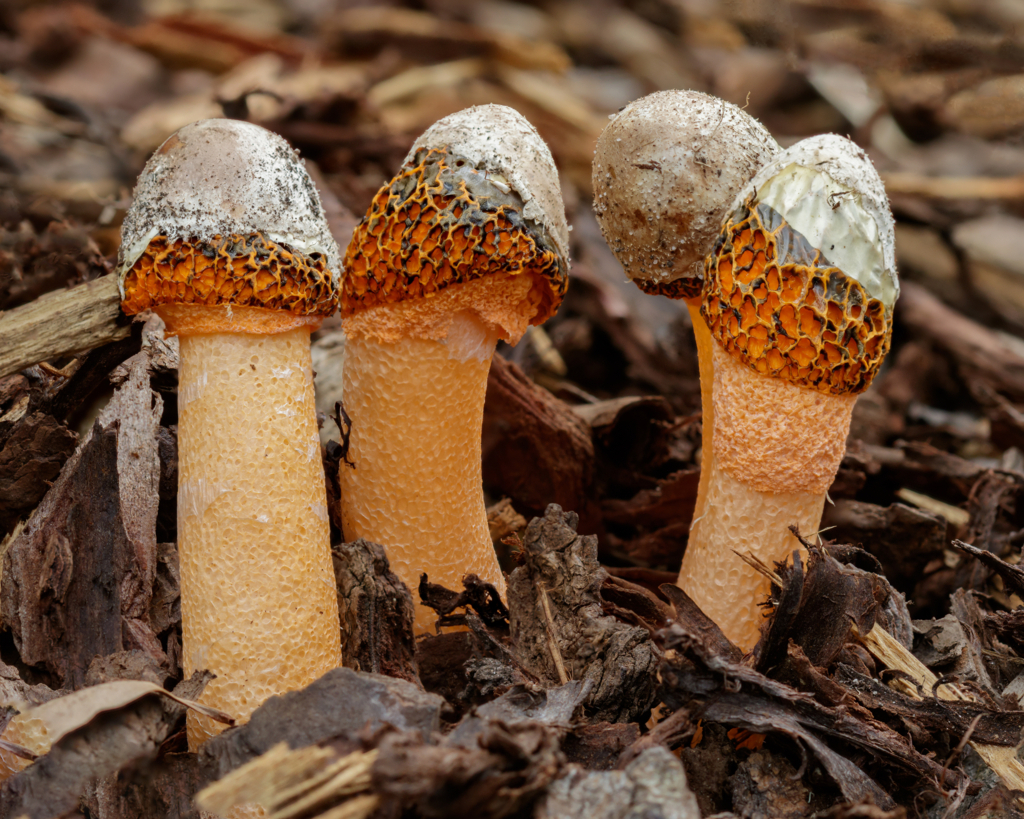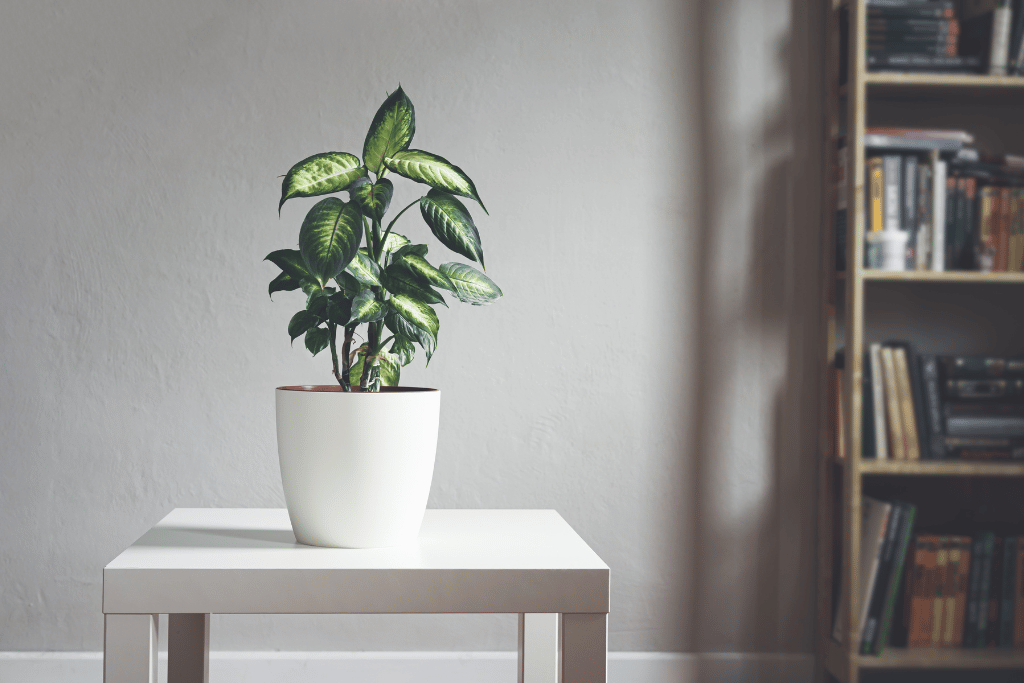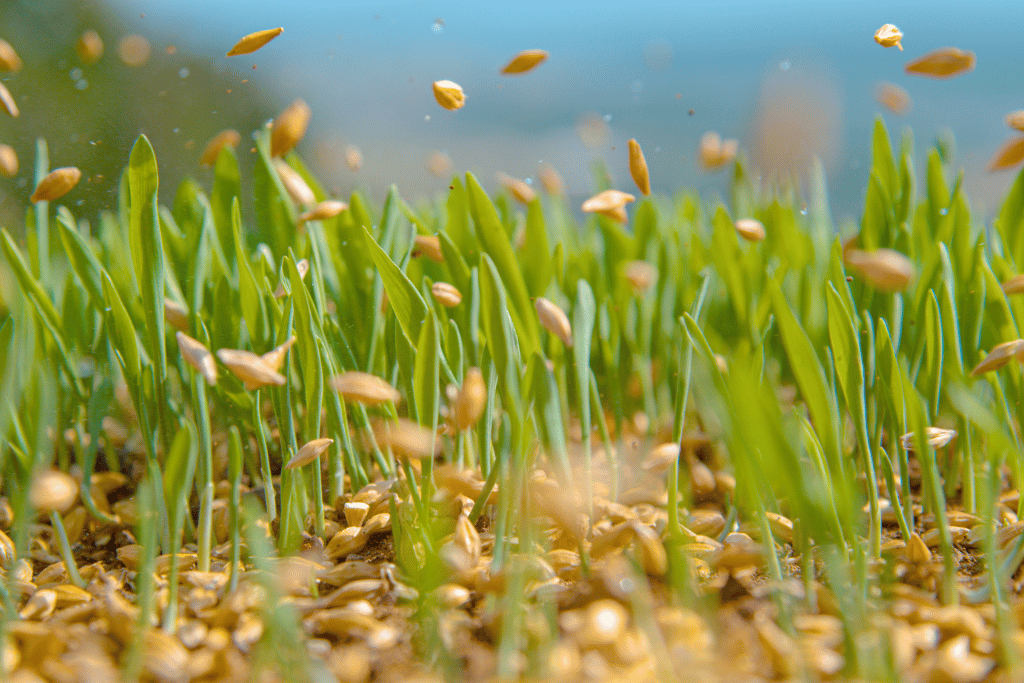
Mulch fungi can be a nightmare for your well-tended gardens. They sprout randomly and make your garden bed look unsightly. Fortunately, there are a few easy ways to get rid of them.
One of the easiest ways to get rid of mulch fungi is to pick them out. Pick the sprouted spores by hand and carefully dispose of them in plastic bags. Other options are to put them in sunlight, adjust the pH using vinegar, baking soda, bleach, or use commercial fungicides.
But what causes mulch fungus? Can you prevent them? Want to know more about how to get rid of mulch fungus? I’ve got all the answers for you!
Attention. The following solutions may seem too simple, but trust me; they bring great results! Don’t you believe me? Read on and see for yourself!
How to Get Rid of Fungus in Mulch
There are many ways to get rid of mulch fungus. First, try simple methods such as picking up the spores by hand or raking the mulch. If that doesn’t work, you can use household chemicals like baking soda, vinegar, or bleach. These can remove the mulch fungus without harming your plants.
Whichever method you choose, make sure you expose your mulch to sunlight. This will speed up the healing process.
Learn how to get rid of fungus in mulch beds. Here are 5 simple ways.
Manual removal of fungi

One of the easiest ways to get rid of fungal growth on mulch is to pull it out. This method is perfect if the fungal growth is visible as individual fruiting bodies such as mushrooms or toadstools. You can simply pluck them out of your mulch bed and dispose of them.
Be careful when picking them, so the spores don’t spread. Pick them by the stem and seal them in a plastic bag. Never dispose of them in the compost garbage can to avoid spreading the spores. (You don’t want to start from scratch again)
Fungal spores are airborne and dangerous to humans and pets. Be sure to wear the necessary protective gear, such as gloves and masks, before touching them. Although most spores are harmless, some can cause skin irritation and respiratory problems.
Promote decomposition
Fungi are natural decomposers. They thrive in warm, moist conditions. If you stimulate the decomposition process, they disappear on their own.
You can heat the mulch to speed up the decomposition process (a temperature of about 105 degrees Fahrenheit is sufficient). First, wash the infested mulch with water and spread it on a flat surface in direct sunlight. The heat will promote decomposition and dry out the mulch.
Once the mulch is dry, you can use it. Put it back in your garden bed and let it do its job!
Increase the pH
One of the best ways to eliminate fungal sprouts is to determine their needs. Then deliberately deprive them of their thriving environment until they die.
Mushrooms usually need moisture, warmth, mulch, and acidic soil to thrive. If you change the acidity of the soil, it becomes difficult for them to survive. Here are a few simple ingredients to raise the pH of your garden bed.
Liquid lime
Add liquid lime to the mulch bed to change the pH of the soil. Don’t use large amounts or concentrations of lime to avoid harming your plants. You can also use a pH tester to determine the pH of the soil and adjust the acidity accordingly.
Always check how well your plants tolerate alkaline soil before you begin. This will help you get on the right track and avoid overdosing and its resulting damage.
Baking soda
Need a friendly ally to kill the mushrooms? Baking soda can be your buddy!
Baking soda is a magical powder that, in addition to its other cleaning properties, acts as an exceptional pH regulator. It makes your soil alkaline and prevents the growth of fungi. You can either sprinkle it over your soil or use it as a spray.
Here’s how to make a baking soda spray. Take a tablespoon of baking soda and mix it with a glass of water. Pour it into a spray bottle and spray it over the infested mulch beds. Since this is an organic remedy, you may need to apply it three to four times for a few days. Over time, the soil will become alkaline and deprives fungal growth.
Vinegar spray
Vinegar is another readily available natural fungicide. The acetic acid in it helps in antifungal and antibacterial remedies. However, it is slightly acidic in nature and should not be overused to avoid harming the plant.
It is always a good practice to dilute the vinegar before you use it. To be on the safe side, you can use apple cider vinegar (less acidic and more alkaline vinegar) to kill the mulch fungus.
Here’s how you make a vinegar spray. Take one tablespoon of vinegar and mix it with one gallon of water. Pour the mixture into a spray bottle, shake it well, and use it. Spray this liquid to kill fungal growth in all parts of the mulch and also in the plant parts.
Apply bleach
Here is another method to increase the pH of the soil – bleaching!
Bleach is a strong formulation. It can harm your plants if you use it directly. However, if you dilute it 1:9 with 1 part bleach and 9 parts water, you get a very effective fungicide. You can use it to eliminate fungal growth on plants, mulch beds, and even household items.
Spray the bleaching liquid on the infested mulch layers. After spraying the diluted bleach, wait a while and scrape the fungal debris from your mulch bed. It is also advisable to remove that mulch layer to avoid the risk of any active spores.
Use fungicides
The use of fungicides in gardens is a topic of debate. Most gardeners avoid fungicides to prevent harmful chemicals from entering their plant systems. Others use them to get the most benefit from them.
The choice is yours.
If you need an effective and quick remedy against mulch fungus, fungicides might suit your needs. Yet, be cautious while you use them. Inorganic fungicides contain chemicals; follow their directions to avoid harming your plants.
If not, you can also use organic fungicides. However, they are less effective and take longer to kill the fungi than the chemical versions.
Discard the mulch
Dispose of the infested mulch! This can be your first or last choice. In any case, this is the safest method among all the above techniques.
Once you discover the mulch fungus colonies, remove them ASAP. This will prevent the further spread of spores and future growth.
Depending on the level of mold infestation, you may remove the entire mulch bed or just the top layer. Be sure to dispose of the mulch properly and do not reuse it elsewhere in your garden. Use clean mulch to replace the old one.
What Causes Fungus in Mulch?
There are many ways for fungal spores to enter your mulch bed. The main reasons for fungal growth in mulch are excess moisture and a lack of sunlight. Fungal spores can be airborne and contaminate your garden soil. Or perhaps your store-bought fertilizer or pot mix is already infected.
Excess moisture
Fungi thrive in moist conditions. So, the more you keep your mulch wet, the higher the risk for fungal growth. This often occurs when you water your plants frequently. Misting and sprinkler watering systems keep the mulch bed constantly wet. This can lead to fungal growth. Instead, aim to water them at regular intervals, but do so thoroughly.
You can also remove your mulch bed when you water your plants. This will keep them dry and prevent fungal growth.
Absence of light
Sunlight is the most important source of energy for plants. Fungi, however, are the exact opposite. They don’t need sunlight to survive. Moreover, they thrive in dark and shady places.
So, when you put your plants in shady places, they don’t get sunlight. This keeps the mulch constantly wet and helps with fungal growth.
Airborne fungal spores
Once fungi mature, they spread their spores in the air. These spores can spread over great distances. They germinate if they manage to land on any organic, moist medium. If not, they remain inactive until favorable conditions prevail.
Airborne spores are harmful to humans and pets. These spores can enter our respiratory tract and cause many allergic and chronic infections.
Infected soil mix
Sometimes the new plants you buy from your garden store are already infected. Their soil mix may already have spores in it. Spores are tiny (about 2–20 microns) and are not visible to the naked eye. So it’s impossible to spot them before you buy your plants.
If you plant the new plants directly in your garden soil, you might put your entire garden at risk. The infection can spread and contaminate your entire yard. It’s always a good practice to report your plants and use a fresh potting mix to replant them.
Contaminated fertilizers
Molds and fungi thrive in organic material, and organic fertilizers are no different. They often contain fungal spores. These become active when you water them while making potting soil. Once these spores mix with your garden soil, it becomes a nightmare to get rid of them!
You can avoid problems with contaminated fertilizers by sterilizing them with fungicides. Buy from certified dealers to get the best quality fertilizers.
How to Prevent Mulch Fungus?
Are you tired of looking for ways to get rid of mulch fungus? Well, with most of the above methods, you can end your search and get rid of the fungus for good. However, a stable option is to prevent its reappearance. As they say, prevention is better than cure.
Here are simple preventative measures to keep mulch fungus out of your gardens:
- Expose the mulch bed to plenty of sunlight. Moisture is fungus’ favorite buddy. If you eliminate moisture, the fungus will leave your mulch on its own.
- Rake your mulch bed frequently. The main mistake while drying wet mulch after watering is that the bottom layer often remains wet. The persistent moisture in the bottom layer can make it susceptible to fungal attack. Avoid this by raking off the mulch layer every so often.
- Another mistake new gardeners make is creating the mulch bed in a thick layer. Keep the thickness of the mulch bed between 1 and 2 inches to avoid overcrowding. This allows heat and light to reach the bottom layer of the mulch bed.
- Change the type of mulch if the fungal infestation keeps occurring. Hardwoods such as cedar and cypress wood chips are more susceptible to fungal attack than softwoods such as twigs and branches. Try softwoods to keep fungal growth in check.
- Always purchase commercial products such as soil mixes, fertilizer, and compost from certified dealers. This can prevent the accidental intrusion of fungal spores into your garden beds.
Some Common Mulch Fungi
Now that we know how to get rid of fungi on mulch, let us look at the different types of fungi that may be found in your garden beds and how careful you need to be when removing them.
Not every fungal infestation is dangerous. Some fungi are beneficial decomposers, while others are harmful invaders. Finding out what kind of fungi thrive in your mulch beds can help you treat them effectively.
Mushrooms
These are simple, vegetative fungal bodies. You can either leave them or pluck them out. However, in most cases, they will not harm you.
Artillery fungi

Artillery fungi are small cream or orange cup-shaped fungi. They are known for their outbursting spore dispersal. The spores of the fungus are sticky and black in color. As the spores spread, they could stick to walls, clothing, and cars, leaving black stains.
Even though they are not harmful, it’s needful to remove them of their stubborn stains.
How to get rid of artillery fungus in mulch?
You can get rid of artillery fungus with cleaning products such as bleach, mouthwash, and toothpaste. Later, scrape off the dead fungus with car oil, wax, or vinegar.
Bird’s nest fungi

These mushrooms are similar to artillery fungi. They are tiny, cup-shaped, and have egg sacs inside them. However, unlike artillery fungi, they do not burst the spores. They need drops of water to spread the spores.
Because they are harmless and do not stain, many gardeners leave these bird’s nest fungi to remain in their gardens. They help maintain nutrients in the soil and regulate the soil biome.
Stinkhorn fungi

Here is another type of true mushroom with proper fruiting bodies and stalks. These stinkhorn fungi are cream, yellow, or orange in color. These mushrooms appear as tentacle-like fungi with an ovoid base.
These fungi are harmless but are famous for their terrible stench. Most gardeners hate the smell and get rid of them almost immediately.
How to get rid of stinkhorn fungus in mulch?
Since they’re fruiting bodies, you can easily get rid of them by plucking them off by their stems. Later, remove the top layer of mulch and rake it off to prevent the spores from spreading.
These fungi thrive in hardwoods, so as a preventative measure, you should also avoid this type of mulch if you want to prevent the growth of stinkhorns.
Slime mold

Here is another characteristic unicellular fungal colony – slime mold. These are unique as they live as a unicellular structure and spread spores. They are usually yellow, orange or pink in color. Because of their appearance, they are also called dog vomit.
These fungi grow very quickly, especially after rain. Sometimes they sprout from the ground within a few hours. Be careful if you find them in your garden. One step over them can release millions of spores.
How to get rid of dog vomit fungus in mulch?
These fungi thrive in moisture. One of the easiest ways to get rid of them is to dry them out. Once the moisture evaporates, it will disappear. For faster solutions, you can use other antifungal products such as baking soda, vinegar sprays, and cornmeal.
In Summary- How to Get Rid of Fungus in Mulch Beds
Let me clarify that not all types of fungi are harmful. Fungi, like the bird’s nest, are harmless, and besides, they help with decomposition. Decomposition breaks down plant debris and adds the resulting nutrients to the soil biome. This, in turn, contributes to the health of the plants and improves their growth.
So, in summary, how to get rid of fungus in mulch beds? When should you do it? Well, sometimes, certain species of fungi are colorful and attractive. These are often wild and poisonous and need to be removed so that the pets do not eat them.
Remember, if any fungal infestation affects the look, feel and smell of your garden, be sure to remove it. If not, let them be. The choice is always yours.
Frequently Asked Questions (FAQ)
Are mulch fungi bad for your garden?
Mulch fungi are generally not harmful to the garden. These fungi are decomposers and help break down plant debris and add nutrients to the soil. These fungi do not attack plant growth; in fact, they encourage it.
Are mulch fungi harmful to people and pets?
All types of molds and fungi are harmful to humans and pets if they consume them. The spores can cause respiratory problems if they enter the nasal passages. When consumed, these fungi can cause many gastrointestinal problems, such as mild poisoning, vomiting, and seizures.
How to get rid of mulch fungus naturally?
There are many ways to get rid of mulch fungus. However, in their natural habitat, most fungi disappear on their own when their moisture content decreases. Good sunlight and aeration can get rid of mulch fungus naturally.
How to get rid of fungus gnats in mulch?
Some of the ways to get rid of fungus gnats in mulch include sticky traps, apple cider vinegar traps, mosquito dunkers, and insecticides. These insects are common in mulch beds and thrive in warm, moist conditions.
Is white fungus on mulch harmful?
White fungi are beneficial fungi. They are pure decomposers as they feed on plant debris and waste material on the mulch. They are critical for improving soil health.



